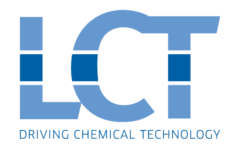Atomic scale design of CO2 conversion catalysts
Aim
This project aims for an atomistic approach to selectivity and stability in heterogeneous catalysis. To this end, you will study nano-engineered model catalysts, prepared by ALD with full site control, and determine their structural and kinetic properties as well as their chemical reactivity for CO2 conversion reactions.
Context
Today’s challenge for the chemical industry is ensuring sustainable supplies of fuels, chemicals and materials for a growing global population, while limiting global warming and climate change1. Controlling the atmospheric CO2 level forms an inseparable part of this evolution. Catalytic technologies will play a pivotal role in addressing this challenge throughout the 21st century by enabling the utilization of alternative energy sources and feedstocks, mitigation of greenhouse gases, and pollution abatement. At the heart of these processes are efficient catalysts, which not only need to be active, but also highly selective, ideally reaching 100% selectivity, and stable.
CO2 conversion catalysts - CO2 can be hydrogenated to hydrocarbons either directly or indirectly, e.g. via syngas. Direct conversion includes the production of urea, salicylic acid, dimethyl carbonate, polyurethane, polycarbonate, polyacrylates and (in)organic carbonates. Further, CO2 can also be hydrogenated into chemicals or fuels such as methane, formaldehyde, dimethyl ether, formic acid, methanol and other alcohols. Additional options lie in its use as mild oxidant, e.g. in CO2-assisted dehydrogenation of alkanes to form alkenes, water and CO. The activation of CO2 and its hydrogenation to hydrocarbons or alcohols are challenging because CO2 is very stable, requesting co-reagents and efficient catalysts.
Program
• Stabilized Rh and Pt NPs with inert Al2O3 and SiO2 coatings:
You will investigate the accessibility of the catalyst surface after coating by CO-adsorption and its impact on sintering/stability by in situ X-ray scattering experiments during calcination.
• Edge/facet-selective ALD coating of Pt and Rh NPs with inert and redox-active coatings:
The coating morphology will be evaluated by CO-adsorption, and the impact on activity and selectivity for CO2 methanation and ethanol synthesis reactions will be assessed.
• ALD coating of redox-active Ni NPs with inert and redox-active coatings:
Redox cycling will be applied to study redox behavior/alloying. The impact of the coating type on selectivity and stability (coke formation) for CO2 dry reforming reactions will be assessed.
